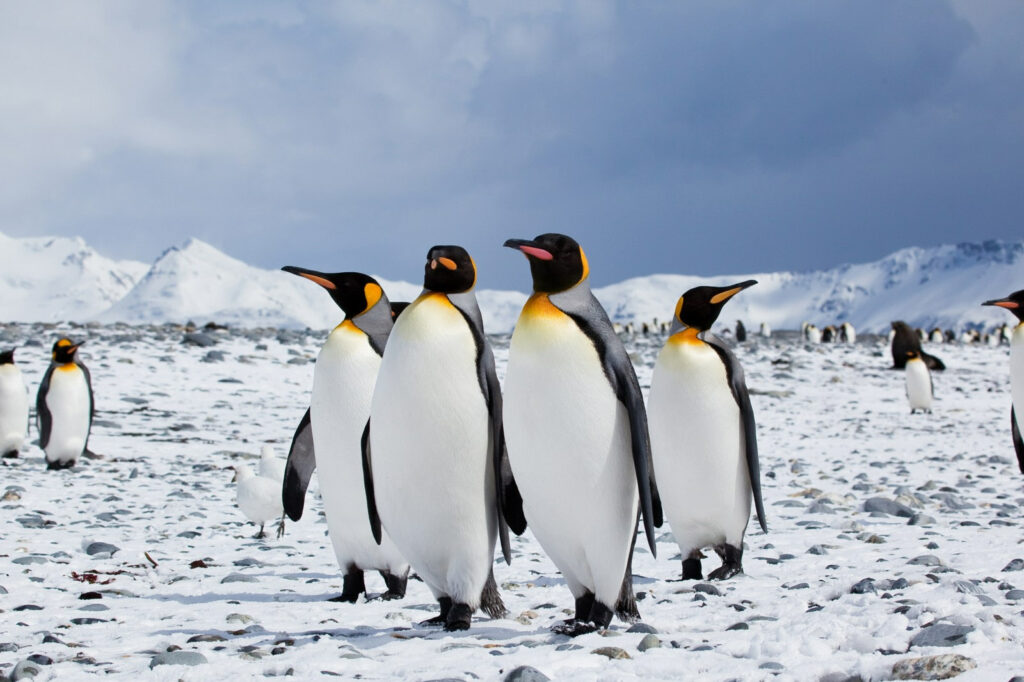Still chasing the alarmist high dragon, NBC shrieks that “Ocean life projected to die off in mass extinction if emissions remain high”. No ifs, ands or buts. Well, a few. Like “could” and “many” and “if”. But who reads the fine print when “The new models suggest Earth could approach Permian levels of marine extinction by 2300 if emissions continue to increase”? Especially about what these wildly hypothetical models are using as their baseline scenario. Could it be… RCP8.5 on steroids? Why yes. Yes it could. And if one thing should go extinct, it’s that projection.
The article in Science is paywalled. But the abstract contains the telltale phrase “business-as-usual global temperature increases”. And then piles assumption on speculation to reach a fever pitch of creative invention.
Actually it starts “Global warming threatens marine biota with losses of unknown severity.” Yeah. Unknown. Not least because, as we have pointed out repeatedly, the Earth was considerably warmer for most of the past than it is now. NBC’s hyperventilation about the study says “The new analysis applies what the research team previously learned about the “Great Dying” 252 million years ago — when more than two-thirds of all marine life in the Permian Period went extinct — as well as other historic extinctions to today’s climate projections. Under a high emissions scenario, the results were disturbing.” But answer us this: What was the temperature before and during the “Great Dying”? Was the dying warmth-related? And was the warming driven by CO2? And was the CO2 at under 1000 ppm? Because if not, you’re just making it up.
According to the study abstract, they’re making it up with impressive mathematical precision. “Here, we quantify global and local extinction risks in the ocean across a range of climate futures on the basis of the ecophysiological limits of diverse animal species and calibration against the fossil record. With accelerating greenhouse gas emissions, species losses from warming and oxygen depletion alone become comparable to current direct human impacts within a century and culminate in a mass extinction rivaling those in Earth’s past. Polar species are at highest risk of extinction, but local biological richness declines more in the tropics. Reversing greenhouse gas emissions trends would diminish extinction risks by more than 70%, preserving marine biodiversity accumulated over the past ~50 million years of evolutionary history.”
Whoa nelly. Reversing emissions trends only diminishes extinction risks by about three quarters? (Which is actually a more exact phrase than “more than 70%” because it avoids the impression of precision.) You mean we face another mass extinction, comparable to the “Big Five” thought to have occurred since the “Cambrian Explosion” of multicelled life, the Ordovician–Silurian extinction around 450-440 Mya, the Late Devonian around 375-360 Mya, the most devastating Permian-Triassic at 252 Mya, the Triassic–Jurassic at the unusually precise 201.3 Mya mark and the most famous, the Cretaceous–Paleogene that finished off the non-avian dinosaurs around 66 Mya (or six if you count “The Great Oxidation Event” around 2.45 billion years ago), even if we get to Net Zero? What sort of fragile rubbish is this ecosystem anyway?
NBC says “the analysis is a reminder that the pace of change on Earth today may be comparable to the most extreme events in history.” Yeah. Or a reminder that it is nothing of the sort since, in stark contrast to 65 million years ago, or 252 million, no mass extinction is happening at all. Scientists generally believe that a giant asteroid smashed into the planet at the end of the Mesozoic, wiping out an estimated 75% of all species (and half of all genera) on Earth in perhaps three years. In case NBC didn’t notice, neither the asteroid nor the mass extinction happened between 2019 and 2022, and not even Greta Thunberg and Extinction Rebellion expect either by 2025.
To answer our own earlier question, NBC does in fact blame the Permian-Triassic extinction on warming driven by volcanoes: “Scientists knew from prior studies of fossilized teeth that surface temperatures during this period soared about 10 degrees Celsius in the tropics, leading many sea animals to go extinct. The researchers suspected volcanic eruptions triggered the changes, so they modeled those conditions.”
Lo and behold, the models told them what they wanted to hear. We are all going to die and CO2 is the problem.
P.S. More precisely, RCP8.5 is. Having conjectured that it existed, we peered behind the paywall and sure enough, there it lurks, in Figure 1 of the paper. We shouldn’t be able to tell. But we can.



I suspect that 'Chicken Little' has been purged from academia under the woke cultural revolution as there might be a risk that some deviant little critical thinker would draw an analogy with CAGW hysteria masquerading as curriculum.
“The new models suggest Earth could approach Permian levels of marine extinction by 2300 if emissions continue to increase” Ummm... Do they seriously believe that technological progress is frozen and that people will still be driving SUVs 280 years from now? And burning nonexistent gasoline?
Why would anyone print such rubbish? Why would any literate person believe it?